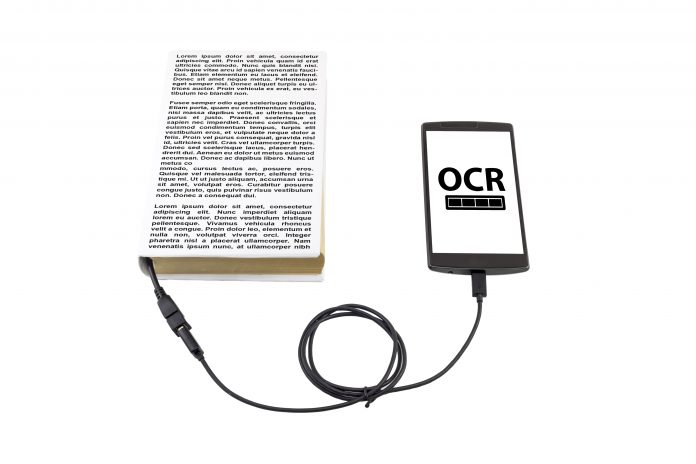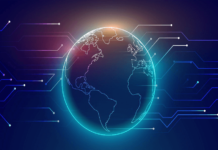With the global digitization of businesses, it was imminent that measures for security would become equally advanced. Since digital platforms bring about threats of identity fraud and financial crimes, it has been made compulsory by regulatory authorities for organizations to secure their systems. One of the security measures comes in the form of ICR technology.
Table of Contents
What is Intelligent Character Recognition ICR?
In simple words, ICR services are an extension of optical character recognition technology. So it’s better to understand OCR first. OCR technology is used in document processing to extract information from a paper document and make it digital. Algorithms of OCR allow it to distinguish between the white spaces and written words/characters.
Once recognized as groups, the characters become words and the same goes for sentences as well. Differentiating between different characters and words is the trick. Various words and characters are assigned metadata respectively, and cross checked against libraries of available fonts. If a situation arises where the software can’t differentiate between, for example, the number “2” and the letter “Z”, then it checks nearby characters and picks one depending on which one is more relevant.
Even after this complex process, there are some characters or words that remain unrecognized. This is where ICR technology is required. While OCR extracts information from printed documents, ICR recognition is capable of recognizing complex fonts of handwriting.
ICR algorithms, incorporating AI technology, are designed in such a way that the ICR software ‘learns’ the different kinds of fonts in a poorly handwritten document and saves them for later use. This is why it’s said that ICR is not yet fully developed. The more data it will receive, the more accurate it will become, as time passes.
AI text recognition builds neural networks that have various different fonts and handwriting styles and the ICR technology itself constantly learns them. This means that ICR handwriting recognition just gets better when a new type of documents comes through. Predictions are given by the intelligent document recognition software based on both previously saved styles, and new data.
Intelligent Word Recognition (IWR)
This powerful technology has the capability to recognize difficult understand, cursive handwriting. It can capture information from completely unstructured documents and handwriting that simple OCR would not recognize.
Since IWR is still under development, it doesn’t replace OCR/ICR. However, it can help automate the data entry system as it extracts information in detail. Besides, these technologies have their own specific capabilities and all of them are needed in one place or the other to make data processing as efficient as possible.
How Does ICR Work?
The reason why ICR technology came into being was the need for automated processing of forms. A handwritten document is required as input, which is then scanned by the ICR app for data extraction.
- When a customer displays their ID document, ICR is able to extract information such as the name, date of birth, etc.
- The character recognition software scans the handwritten document
- ICR engine extracts the required information
- The output is automatically validated to produce results.
Pattern Detection
Making the use of complex matrix matching algorithms, patterns can be detected in documents by matching them with previously stored data in the libraries. It’s not humanly possible to go through a library of patterns all at once, but ICR technology does it with ease.
Feature Recognition
Feature recognition uses the most advanced algorithms and makes it possible to detect fonts of different handwriting styles. Thanks to the large amount of data learned by the AI system, it recognizes nearby characters and identifies what the word is. Each character is detected as a separate entity, and crossing lines or angled words can also be recognized.
Automated Data Extraction
Automated data extraction with ICR replaces the process of hiring staff for the purpose of data entry. This is because it does the job of both ‘reading’ the document and also extracting only the required information from it.
Use Cases of ICR Technology
ICR technology can be used in places where there is a need for fast document processing and automation. Without the use of ICR technology, only the information from printed documents could be recognized and extracted. Today, a lot of modern business software uses this technology as it has proved to be very accurate. Before the invention of Intelligent Character Recognition ICR technology, the processing of and data extraction from unstructured documents was a fairly difficult process.
Intelligent Character Recognition ICR Technology is implemented in Robotic Process Automation, as well as optical mark recognition (OMR) applications for automation of processes. It’s also used for data entry and other related operations in various industries. Apart from other documentation, the communication between companies from different countries in the world brings up the need for the translation of documents, and ICR technology supports a wide range of languages.
All the mobile and web applications for scanning documents make use of this technology for scanning documents and easily converting them into pdf files. Also, airports use it to scan passports and extract personal details of passengers, and also for checking tickets and hotel receipts, etc.
Handwritten forms and documents are also of equal importance, and the data extracted from them using ICR technology can then be saved in the company databases for easy access, and time is saved because data doesn’t have to be entered manually.
Benefits of ICR Solutions
ICR technology as an improvement to OCR works more effectively and can identify various fonts and writing styles. The use of Artificial intelligence-based neural systems provides the capability to learn, and as more data is processed, it becomes better.
So whenever a new kind of document with a different writing style or font is fed into ICR, the system becomes more enhanced and efficient. Be it banks or hospitals, or even government institutions, all have forms that need processing on a daily basis. That is where ICR technology comes in handy. In some organizations, precision is required when it comes to the processing of data, and ICR technology provides accurate recognition of large amounts of data.
Apart from this, ICR technology makes it easier to search for data. For instance, when a handwritten document has important information that needs to be searched, it’s a tough and time-consuming task to look into several pages and find the required data. However, when ICR is used for document scanning and data extraction, the information is converted into digital form and hence it can be searched through easily.
The old way of storing data was to fill up cabinets with stacks of files, and that obviously took up a lot of storage space. But now those days are over since ICR technology has created an easy way to digitize handwritten documents, allowing companies to store them on cloud storage. A large number of documents and information that needs to be processed on a daily basis can be easily opened and edited from the cloud storage, saving a considerable amount of time.
Concluding Thoughts
To sum it all up, ICR app technology automating the process of data extraction reduces the processing time, eliminating the need for manual data entry. Additionally, the processing of large datasets with more accuracy helps businesses make their operations efficient.












